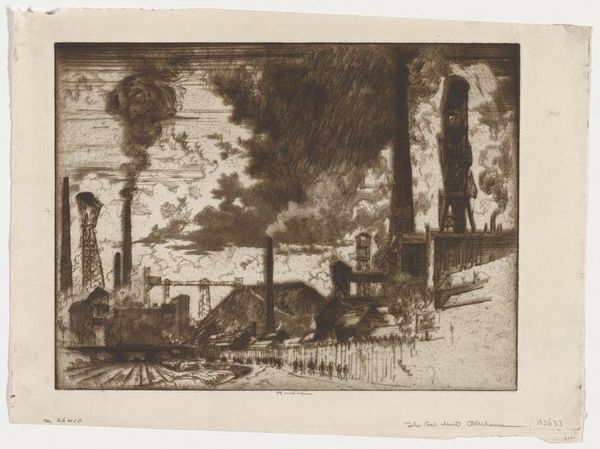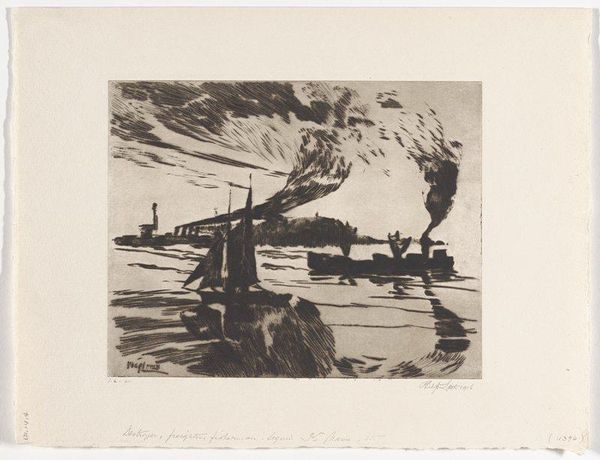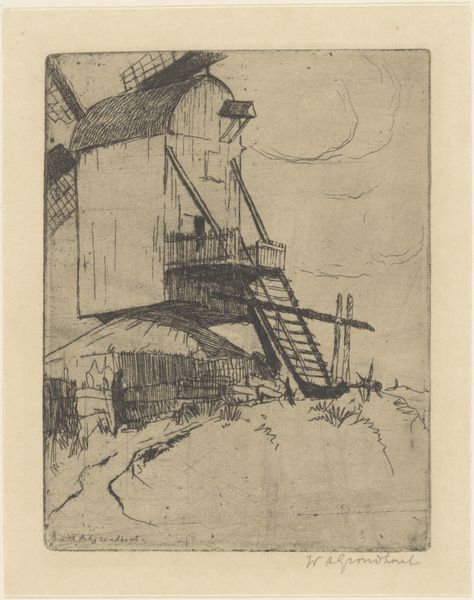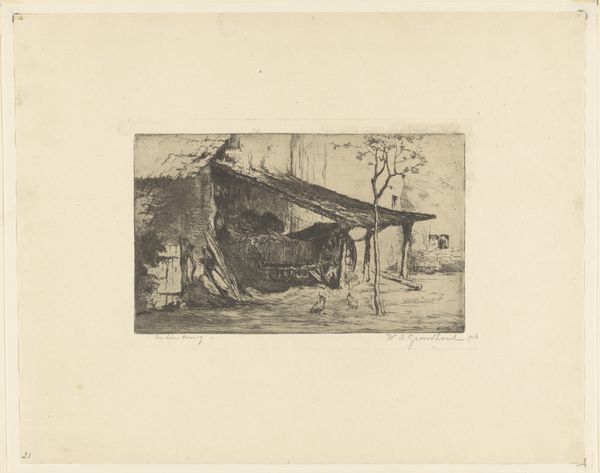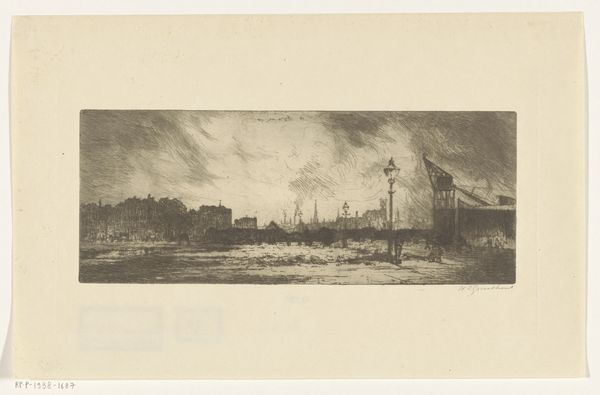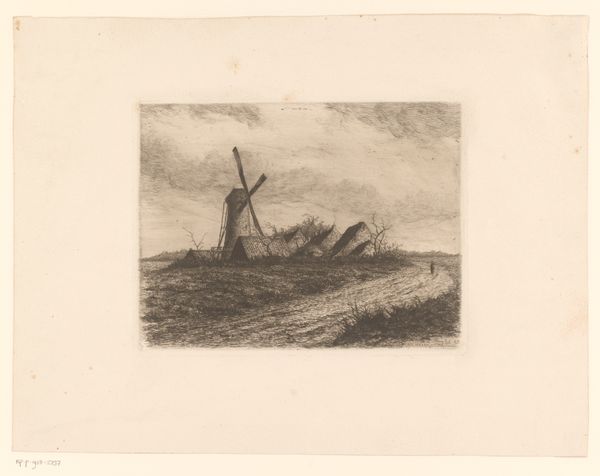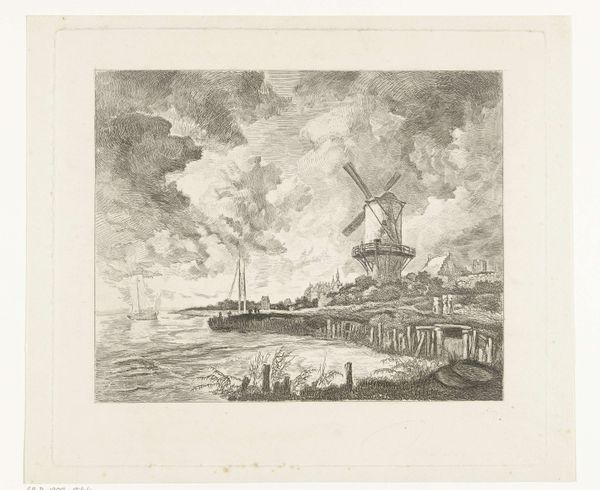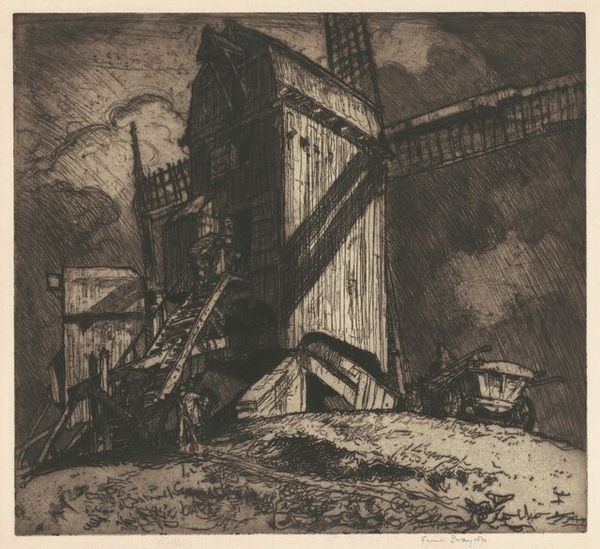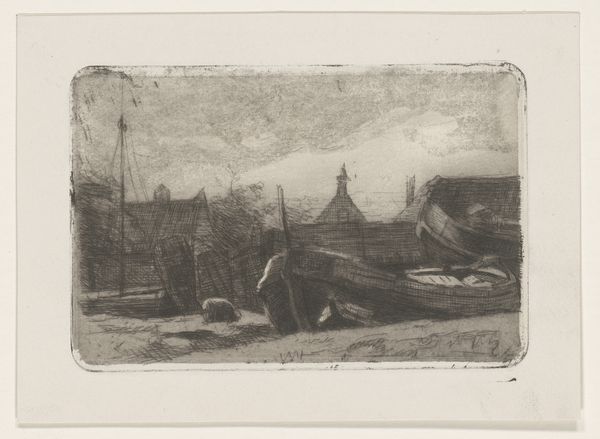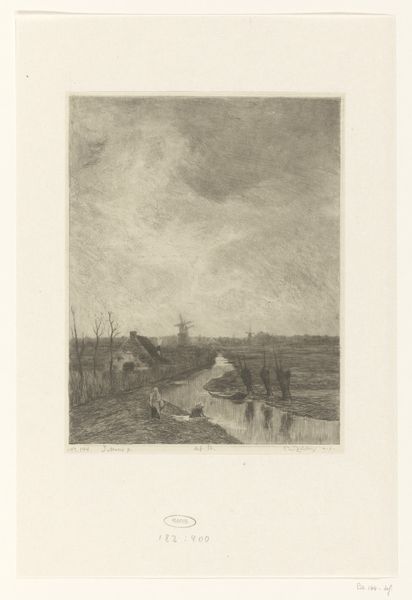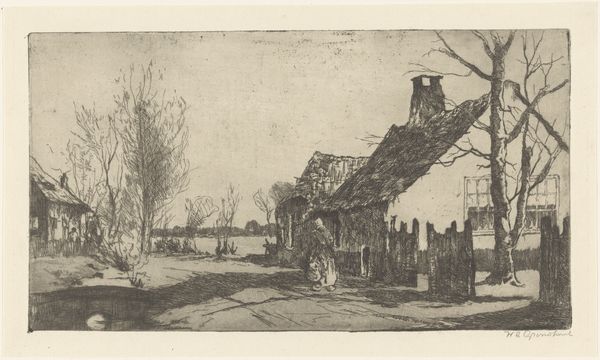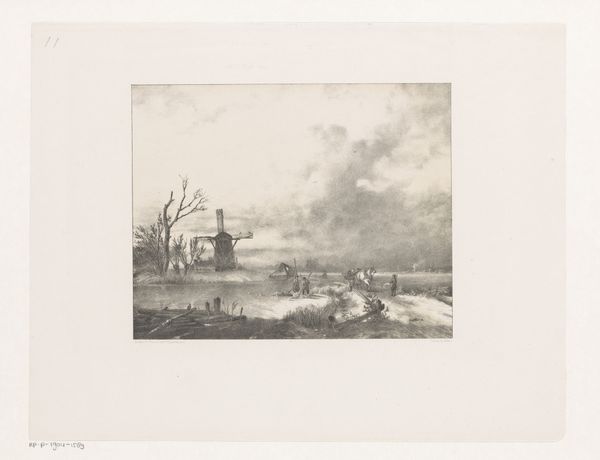
aquatint, print, etching
#
aquatint
#
photo of handprinted image
#
water colours
#
ink painting
# print
#
etching
#
possibly oil pastel
#
fluid art
#
ink drawing experimentation
#
underpainting
#
france
#
watercolour bleed
#
watercolour illustration
#
watercolor
Dimensions: 6 3/8 x 9 in. (16.19 x 22.86 cm) (plate)9 1/4 x 11 7/8 in. (23.5 x 30.16 cm) (sheet)
Copyright: No Copyright - United States
Louis Morin made this etching called La fin de Montmartre, sometime during his lifetime. The lack of color sets a stage for a deep dive into value and texture, a dance of light and dark that feels both immediate and timeless. Looking closely, I notice the intricate network of lines that build up the image. They are not just descriptive; they’re expressive, full of movement. The sky, especially, has this turbulent energy, like the storm is about to break. You can almost feel the wind. The texture of the windmill is incredible, all those little hatch marks giving it a solid, almost gritty feel. Then there’s the contrast. The foreground is dark, almost brooding, while in the distance, there’s a glimmer of light suggesting possibility, or maybe just the inevitable march of time. It reminds me a little of Whistler, that same interest in capturing a mood. In the end, it’s all about how these elements come together to create a moment, a feeling, a question that lingers long after you’ve moved on.
Comments
minneapolisinstituteofart almost 2 years ago
⋮
Author, illustrator, and painter Louis Morin was born and pursued his career in Paris. Remembered in large part for his views of Montmartre, he also created silhouette figures for the "theatre d'ombres" (shadow plays) staged at the famous Chat Noir nightclub in that district. He edited and illustrated the short-lived journal "La Revue des Quat'Saisons" (1900-01) and contributed to other humor magazines, including "La Caricature" and "L'Assiete au Beurre." He founded the Salon des Humoristes, where he also exhibited his work. The present work is a view of a windmill and viewing platform atop Montmartre, then on the outskirts of Paris. More specifically, it is probably one of the two mills at the Moulin de la Gallette, a popular gathering place—perhaps most famously shown in Renoir's 1876 painting in the Musée d'Orsay. The observation deck seen to the left of the mill was also depicted by Vincent van Gogh in a painting of 1886 in the Art Institute of Chicago.
Join the conversation
Join millions of artists and users on Artera today and experience the ultimate creative platform.

